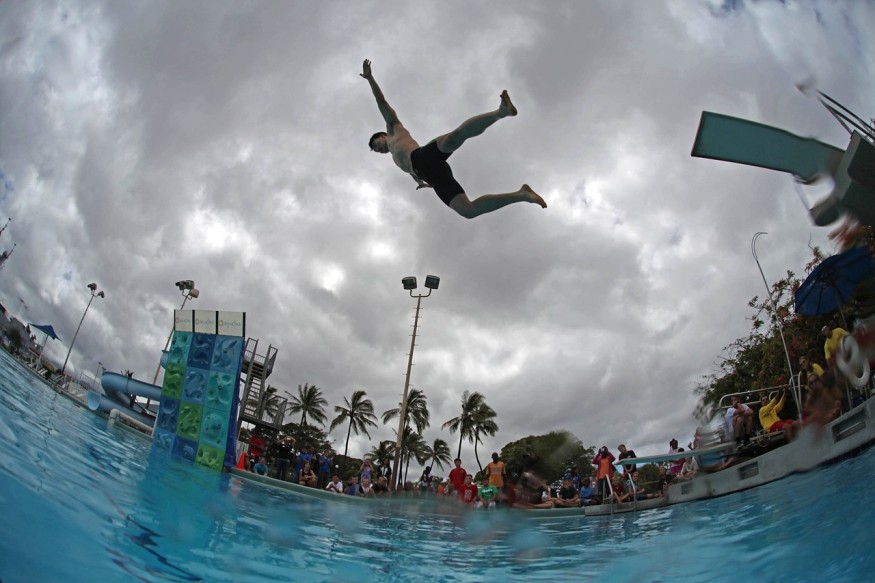Swimming pools offer various fun activities like diving, playing games, and swimming laps. Diving boards come in different heights, with some being as high as 10 feet.
While graceful swan dives and splashy cannonballs are enjoyable, belly flops can be painful, leaving you wondering why. The contrast in the sensation between a belly flop and a regular dive or cannonball is perplexing, given that water typically feels inviting and refreshing.

Why Do Belly Flops Hurt?
In the case of a sudden impact with a solid surface, such as the ground, a person can distinctly feel the reactionary force, which can result in broken bones. However, water behaves differently, as it moves out of the way when a person enters it. The force exerted by water depends on factors like the height of the fall, the person's weight, and the contact area.
In a belly flop, the entire body makes contact with the water in a very short time, resulting in a larger surface area coming into contact with the water. This leads to more water being displaced rapidly, causing a greater reactionary force. The experience is somewhat akin to hitting a solid surface, making the water feel like concrete, and often causing bruising.
Surface tension also plays a role when entering water, as it's harder to break the water's surface tension than to move within the water once submerged. In diving competitions, aerators are used to create bubbles that break the surface tension and protect divers.
The larger the surface area of a person's body hitting the water, as in a belly flop, the more resistance the water offers, making it briefly feel almost incompressible as the person enters it.
Engineering Significance of Belly Flops
Daniel Harris, a professor at Brown University, explains the importance of why belly flops hurt by discussing the physics of going from air to water. This understanding is important for engineering to handle high-impact air-to-water forces in naval and marine applications.
To delve deeper into the phenomenon, Harris and his team collaborated with researchers from the Naval Undersea Warfare Center and Brigham Young University. They conducted a study using a modified water experiment resembling a belly flop, employing a blunt cylinder with added vibration.
This experiment challenged conventional thinking that most studies involve rigid bodies impacting water, where the shape remains unchanged upon impact. The team explored how the dynamics and forces change when flexible objects deform upon impact. They attached a soft "nose" to their cylinder with flexible springs, akin to a car's suspension system, to distribute the impact force over a longer duration.
Unexpectedly, the results revealed that while the strategy could be effective, it didn't consistently soften the impact. In some cases, the flexible system amplified the maximum impact force compared to a rigid structure, primarily due to vibrations. The researchers concluded that the softness of the springs is key, requiring a balance to absorb impact without increasing vibrations.
This insight paves the way for future research inspired by diving birds to design robotic impactors that can execute active maneuvers during water entry, potentially mitigating high forces for rigid structures.
RELATED ARTICLE:
Why Does Blonde Hair Turn Green in Swimming Pools? No, It's Not Chlorine That's Causing It
Check out more news and information on Physics in Science Times.
© 2025 ScienceTimes.com All rights reserved. Do not reproduce without permission. The window to the world of Science Times.











